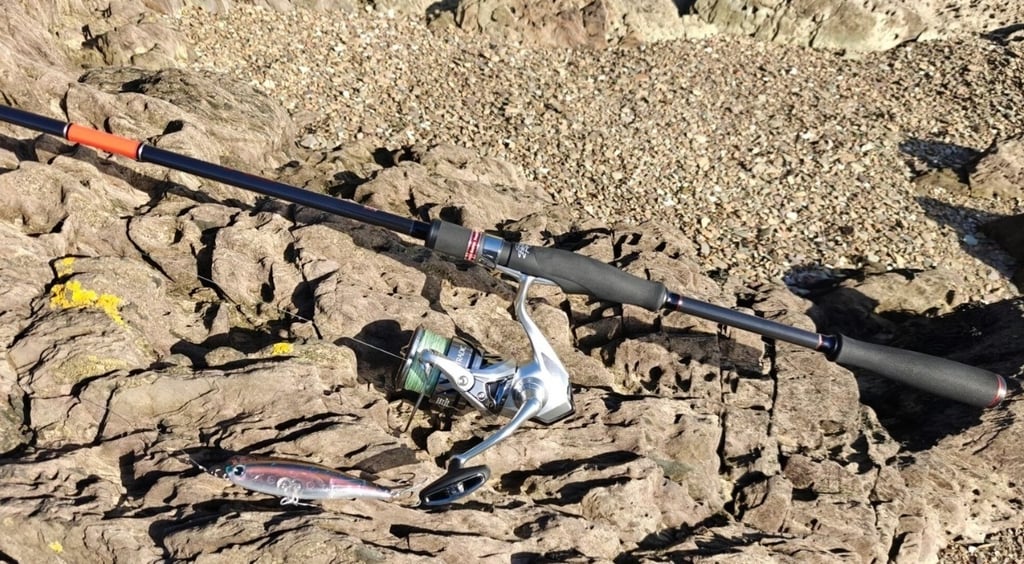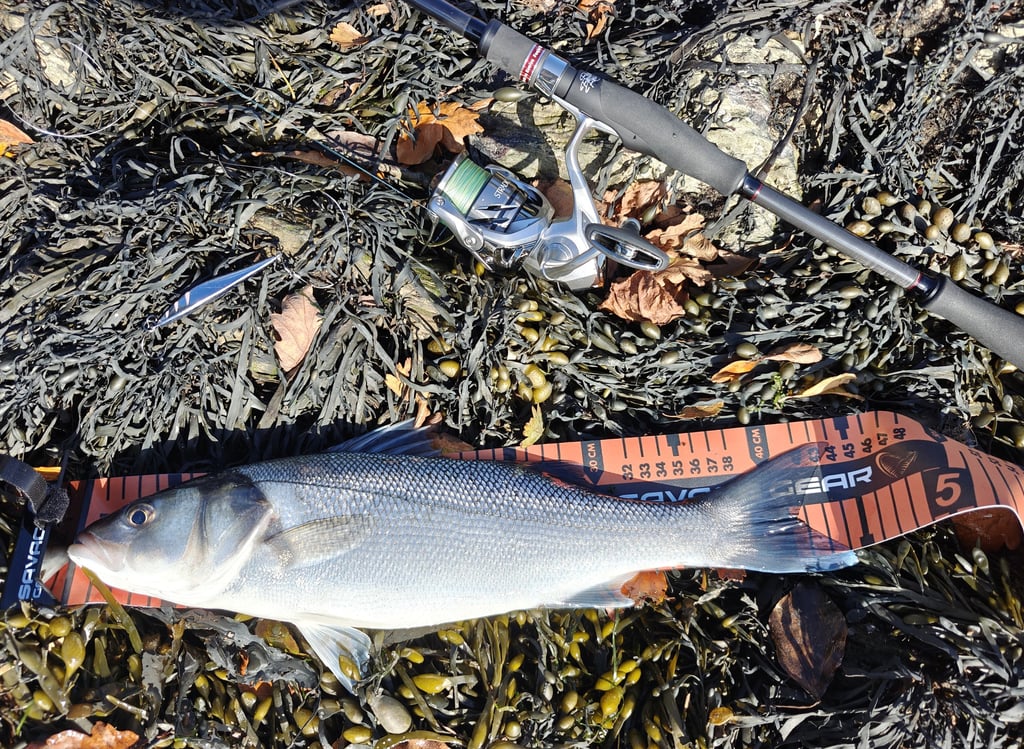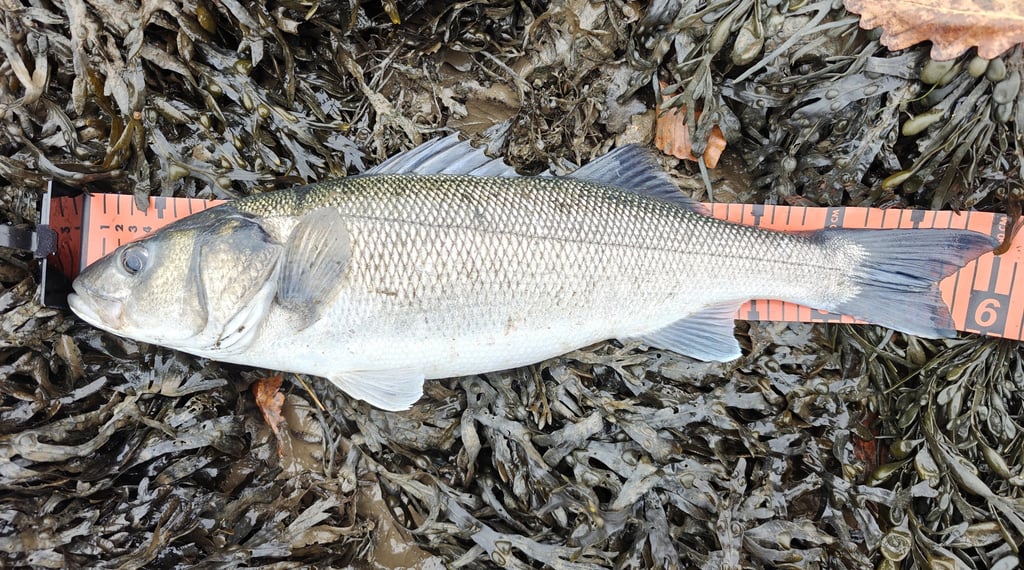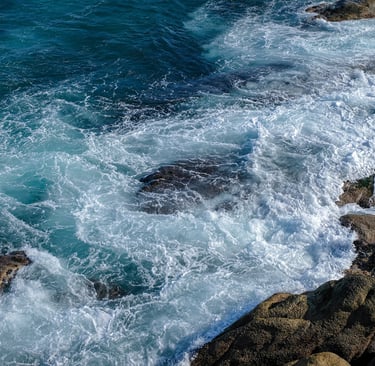Apia Foojin'RS Art Magic 90ML+
Apia Art Magic Rod Review Pt 2
TACKLE REVIEWS.
7/24/20255 min read


Review Part 2: Fishing.
Previously reviewed on 25-07-24
Well, I finally had a chance to try out the rod. I grabbed all my gear and my new Apia Foojin'RS Art Magic, put it in the car, and drove to a place where I have mainly fished this year, an estuary on the River Lyner, near where it joins the River Tamar. It produced my PB Bass of 56 cm a few weeks before. We have had a lot of rain here in Cornwall; last week it was so brown with runoff and strong tides, but this week looked a little better. I had planned to get there earlier; the tide had been flooding for a couple of hours, but with a smaller tide, the water was still coloured but clearer than I was expecting. I was not expecting too much action.
Joining the two sections together, the rod feels strong. One thing I like about the joint is that the top section has a capped end, meaning no small stones or debris can get inside. This is a big plus for the Art Magic design. I attached my Shimano 23 Stradic FM 4000XG, loaded with 20lb Major Craft Dagan braid X8 multi-coloured.
The first lure I attached was a Chappie 100 in St. Ammo color. I was using about 2' of Major Craft Dagan fluorocarbon leader, 16lb, with a lure clip, usually the Berkley ones, but I was testing the Ocean Legacy Access swivel ones. Time to try out this rod; I did a few medium-strength casts to get the feel of the rod. The wind was about 15-20 coming straight at me, and the lure was not going far out. This time, I stepped up the strength of the cast.
I gave it a good punch into the wind, the lure flew, and the braid whizzed off the spool. I thought to myself, "Wow, I was getting a very good distance into the wind with a surface lure, much more than the previous rods I had used." The softer tip and strong butt section allow us to showcase the power of the Art Magic. Retrieving the lure was excellent, with the softer tip section twitching the lure; the walking the dog style method also improved for me; I found that with my previous rods, the lure would go all over the place. With the Art Magic, I could get a much smoother action and natural movement on the surface.
Nothing was interested in the surface lures, so I decided to switch to a metal lure. I have been using the Ocean Legacy Slingshot Surface irons (a review on these can be found here). I have caught a lot of small bass on these—30 bass in a 2-hour session—up to 38 cm, a couple of weeks ago at the same mark. These lures are about the size of the baitfish they have been feeding on in the estuary, so I had confidence I might get something. I attached a 26g Chrome on and gave it a good thump.
I was now feeling confident to give this rod a thump with its powerful butt section. After a few casts, I threw one straight in line with the sun, just to get the shiny chrome lure to flash in the sunlight. After a few turns, I had something hitting the lure. Bang! The rod arched around and hooked up; the tip was twitching and absorbing the fish pulling. A small bass soon appeared, probably about 30 cm. Just as I was going to beach it, it made a last-ditch shake of the head and unhooked, zooming off into the depths.
This gave me more confidence in this rod to perform the tasks that I wanted from it. A few more casts and I was hit again. This time, the fish was zooming around like crazy, the tip soaking up every lunge from it. After a few minutes, a nice plump mackerel appeared after almost engulfing the whole lure. It then went quiet, the rod still performing beautiful casts every time. I changed to a mint glow version of the slingshot, thinking it would show a little brighter in the murky water, but no takes at all. I switched back to the Chrome version and kept on launching out the lures.


I was determined to christen my new rod with a decent bass. I had lost one earlier and had a mackerel; I wanted a half-decent one before I went home. I kept throwing the lure in different directions, working the area in front of me, retrieving it back to me, then bang, I was hit. The Art Magic tip arched around, and the line screamed from the drag of the Stradic.
I knew this was a better fish; the tip performed beautifully, absorbing every lunge the bass took. The power of the butt got that fish under control and brought it into the beach quite quickly. And there was my reward: a beautiful, plump 44 cm bass—not a monster, but a nice fish to catch the first time with the Art Magic.
I didn't have time to try any plastics today; I tend not to use them as much as surface lures and metals. However, I always carry some and will try them another day.


I bought my Art Magic based on feedback from a post I made on my Facebook Group, Kernow Bass, asking who had the Art Magic and what it was like. The feedback was amazing, and I was somehow missing out on having a better rod to fish with. Yes, any rod will catch fish, but sometimes a little more performance from a rod is needed.
This is where the Art Magic comes in: the grip, the joint, the guides, the tip, the butt—everything has been thought out to be the best for the UK angler. A huge thank you to Ben Field, who designed this rod, and to the rod builders at Apia who have made this special rod for us anglers. Thank you as well to all the guys who commented on the post; you were spot on! Finally, a thank you to Dom and Tracy at Lowen-Chy Angling, Cornwall, who supplied my rod.
The Art Magic has an RRP of £399.99 and is available through the Art of Magic Fishing website or by contacting Lowen-Chy Angling. It is also available from other Apia stockists.
On the 16-10-24, I landed a new personal best bass of 60 cm while fishing with a chrome surface iron metal lure on low tide. The fish gave me a fantastic scrap on the Art Magic, and it was brilliant to bring the fish under control. Very happy, guy!!!
Conclusion.
A Plump 44cm Bass.
My Setup.
Update on Fishing.
My PB Bass 16-10-24
Get in touch.
Contact Me.
Fill in your details opposite or use email below, thank you. Steve @kernowbass.
admin@kernowbass.com


